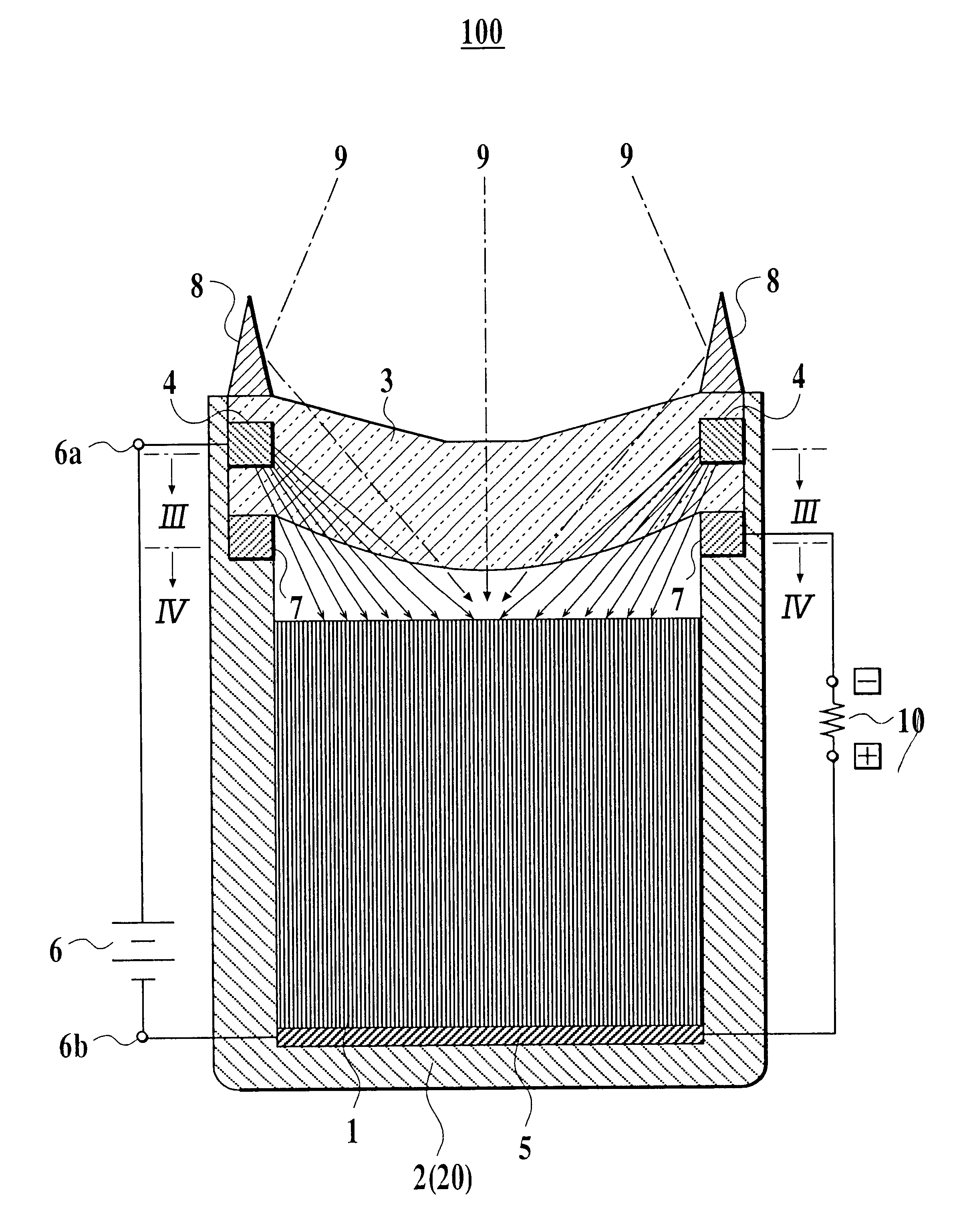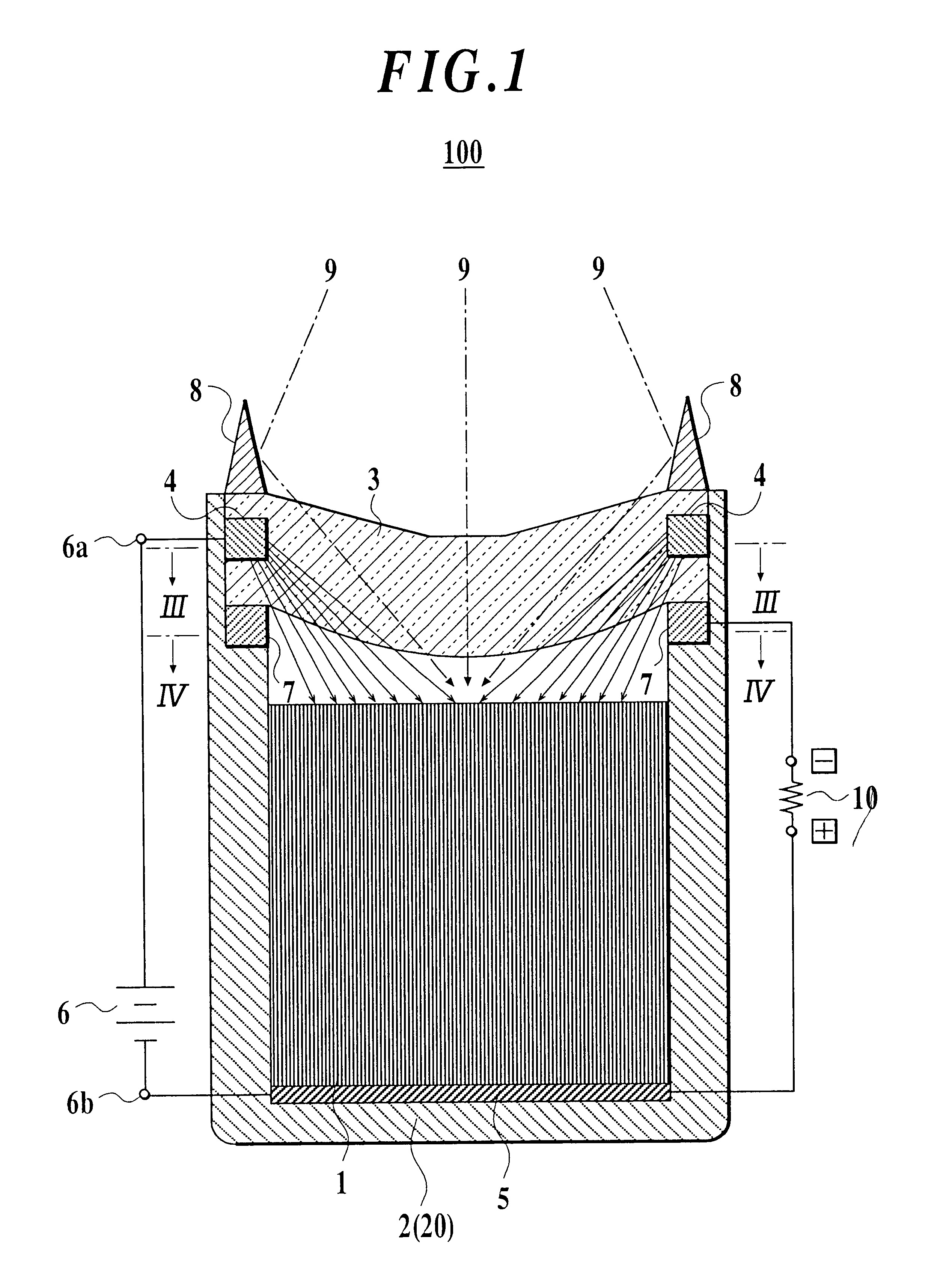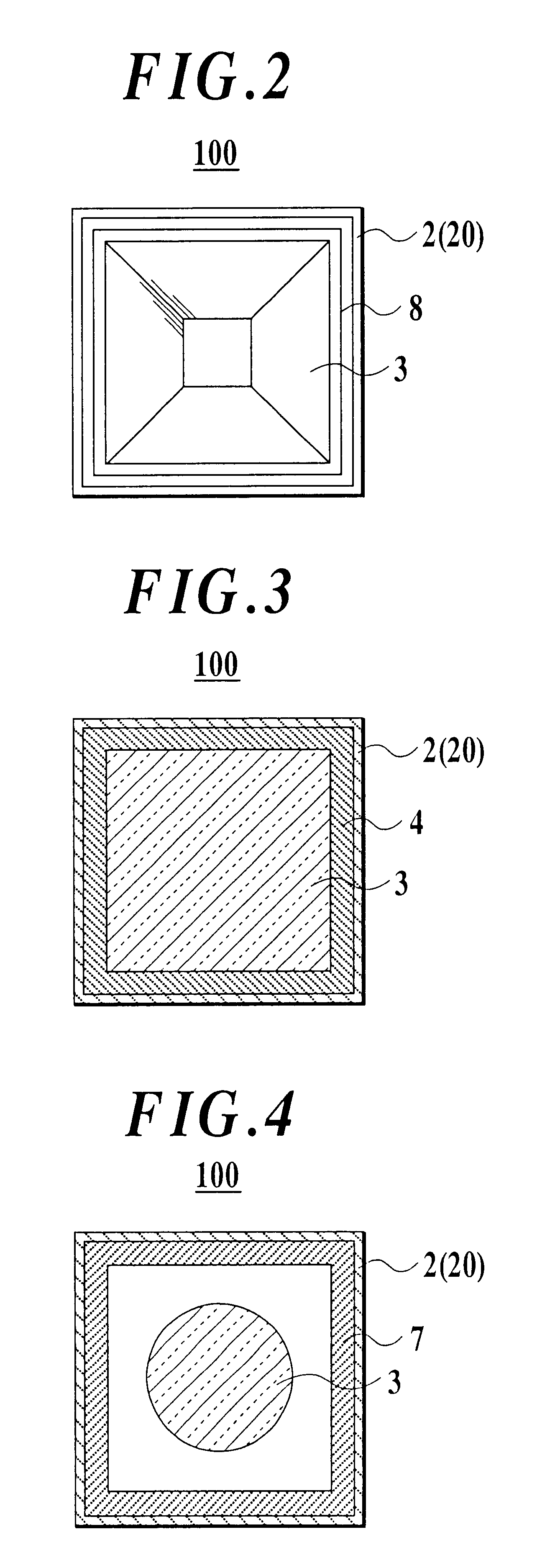Solar energy converter and solar energy conversion system
a solar energy and converter technology, applied in the direction of generator/motor, light radiation electric generator etc., can solve the problems of poor practicality, bad energy conversion efficiency, and inability to guarantee that the use of thermal power generation, hydroelectric power generation and nuclear power generation will provide a stable supply of electricity
- Summary
- Abstract
- Description
- Claims
- Application Information
AI Technical Summary
Benefits of technology
Problems solved by technology
Method used
Image
Examples
first embodiment
FIG. 1 is a cross-sectional side view showing a solar energy converter according to the first embodiment of the present invention. FIG. 2 is a plane view showing the solar energy converter according to the first embodiment of the present invention.
As shown in FIGS. 1 and 2, the solar energy converter 100 comprises an insulated vacuum vessel 2 containing an electron emitter 1 therein. A light-concentrating instrument 3 made of insulated material that is pervious to light, is attached to the upper portion of the vacuum vessel 2. An electron accelerator 4 is provided within a light-concentrating instrument 3. A cathode 5 is provided at the bottom of a vacuum vessel 2, and is electrically connected with the electron emitter 1. The electron accelerator 4 and the cathode 5 are connected with an electric field supplier 6.
An electron collector 7 is provided in the vacuum vessel 2 positioned below the electric accelerator 4, while coming into contact with the lower surface of the light-conce...
second embodiment
FIG. 6 shows a solar energy converter according to the second embodiment of the invention. In the figure, the same reference numerals are attached to the same parts of the second embodiment of the invention as the first embodiment, and only different parts are explained below.
In the solar energy converter 200 according to the embodiment of the invention, the electron emitter 1 comprises diamond. The diamond used in the solar energy converter is constructed in such a manner that ions are implanted into a flat plate-shaped diamond so as to form nanoscale projections and cavities on its surface. This is for the purpose of improving the electron emission characteristics. By using such an electron emitter 1, the same working effect as the first embodiment can be obtained.
third embodiment
FIG. 7 shows a solar energy converter according to the third embodiment of the invention. In the figure, the same reference numerals are attached to the same parts of the third embodiment of the invention as the first embodiment, and only different parts are explained below.
In the solar energy converter 300 according to this embodiment of the invention, the electron accelerator 4a is coated with, for example, aluminum or the like to perform the role of a sunlight reflection member. The electron accelerator 4a is so constructed as to let the sunlight which irradiates on it, and the sunlight 9 directed to the electron collector 7, reflect in the direction of the electron emitter 1. This is for the purpose of increasing the sunlight 9 concentration efficiency.
When the sunlight reflection member 8 is provided on the upper surface of the light-concentrating instrument 3, that is, provided outside of the light-concentrating instrument 3, the function of the sunlight reflection member 8 ma...
PUM
 Login to View More
Login to View More Abstract
Description
Claims
Application Information
 Login to View More
Login to View More - R&D
- Intellectual Property
- Life Sciences
- Materials
- Tech Scout
- Unparalleled Data Quality
- Higher Quality Content
- 60% Fewer Hallucinations
Browse by: Latest US Patents, China's latest patents, Technical Efficacy Thesaurus, Application Domain, Technology Topic, Popular Technical Reports.
© 2025 PatSnap. All rights reserved.Legal|Privacy policy|Modern Slavery Act Transparency Statement|Sitemap|About US| Contact US: help@patsnap.com



